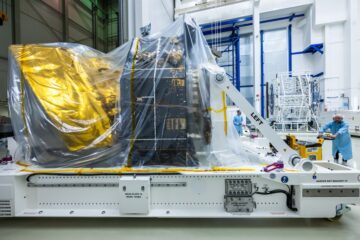Continuing our weekly series on the application of astronomy to technology, we have an piece written by Dmitrij Bisikalo; Professor at The Russian Academy of Sciences’ Institute of Astronomy and the President of the International Astronomical Union’s Commission B1 on Computational Astrophysics. In this piece, he outlines the link between astronomy and grid computing and how this has benefited society as a whole through a range of publicly distributed computing projects.
The search for extra-terrestrial intelligence by radio astronomers has been formative in spawning grid computing – the pooling of vast numbers of machines, distributed around the world, for crowd computing efforts to solve complex scientific problems.
Over recent decades the amount of data obtained by astronomers has grown dramatically. New telescopes, new space missions, they have all contributed new tools and to the development of new methods to analyse the data they create. Vast amounts of computational resources are needed for their processing. Grid computing – where the computers are distributed, being widely separated and connected together across a network – is a method of sharing the resources and then efficiently using them.

Historically, the first two public distributed computing projects were started to solve mathematical (GIMPS, 1996) and cryptographic (distributed.net, 1997) problems. However, the third, and the most famous project started was SETI@home in 1999. SETI – the Search for Extra-Terrestrial Intelligence – sought to find signs of other intelligences via their transmission of radio signals. This work still in progress, but the project has already achieved an amazing result – the engagement of more than 1.7 million users, all contributing their computing power to the project.
An even more important outcome is BOINC – a platform for high-throughput distributed computing, applied to tackling large-scale projects. Using this software people contribute their computing power not only to SETI@home, but to many other important projects in physics, medicine, molecular biology, climate modelling, as examples.
The idea that ordinary people can participate into complicated scientific problem has been very fruitful. SETI@home has paved the way for many volunteer projects. Modern projects are oriented to sharing more than just computing resources. Enthusiasts can, for example, provide astronomical data, obtained using amateur telescopes via the AAVSO – an international non-profit organization of variable star observers.
It has been found that distributed communities can solve many problems that do not have good algorithmic solutions. A famous example is planethunters.org – an initiative to attract volunteers to search for exoplanets transiting their host stars, in light curves obtained by the Kepler space mission. This project is a part of Zooniverse, the largest and most popular platform for people-powered research.

Several other astronomical projects started on this platform: “SuperWASP Variable Stars” (classification of periodic variable stars), “The Hunt for Galaxy Clusters”, “Astronomy Rewind” (classification of old astro-referenced images), “Solar Stormwatch” (an analysis of solar storms images from NASA STEREO spacecraft), “Milky Way Project” (searching for specific objects on infrared space telescope images), “Radio Meteor Zoo”, “Supernova Hunters”, “Disk Detective”, “Radio galaxy Zoo” and “Planet Four”, as well as dozens of projects in physics, biology, etc.
Astronomy has always been at the cutting edge of science. It has inspired many to not only become scientists, but also to create art, poetry, to find new forms of self-expression. Projects like SETI@home have opened new possibilities for society to unite, to be part of great scientific initiatives, in ways that were never possible before.



0 Comments